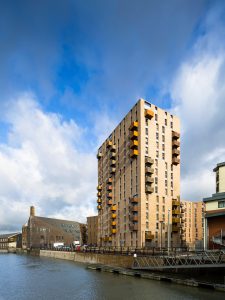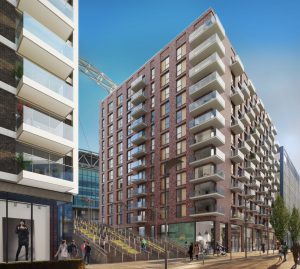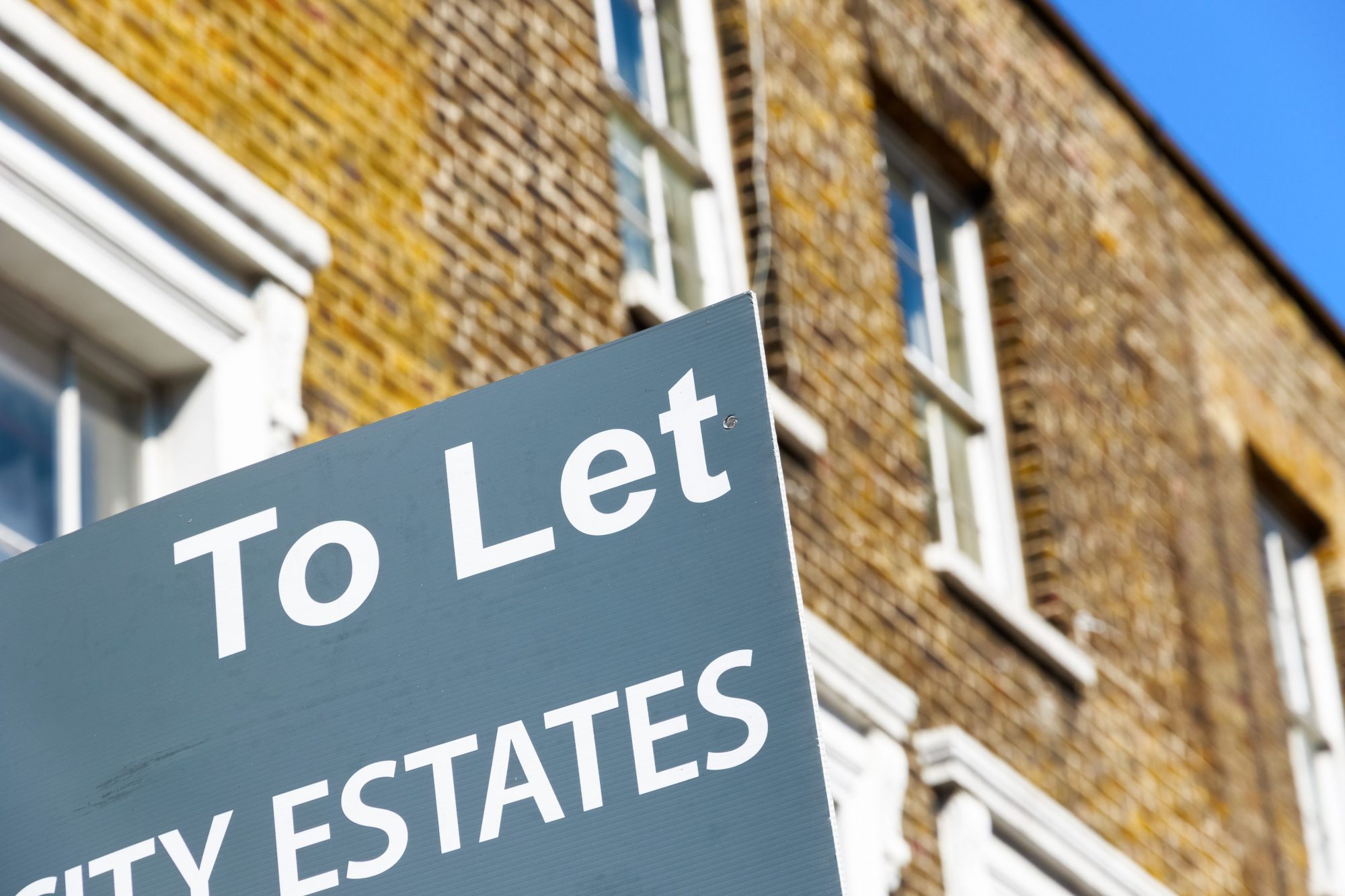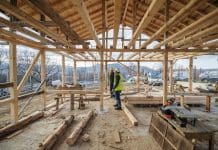Build-to-Rent, or BtR, has risen in five years from almost nowhere to be a potential core element in meeting Britain’s housing need. Why should this have happened? What does it mean? Is it all good news?
Home ownership used to be the basic model for housing in the UK. 70% of Britons owned their homes in 2000, more than any other Western European nation. Getting onto the housing ladder was a key part of everyone’s financial life plan. That way one could ride the inflationary price wave, trade up regularly and eventually use the value as part of a pension. Then it all stopped working. Supply faltered. Prices, and the deposits required for a mortgage, rose out of the reach of the majority who might have aspired to own. The bank of Mum and Dad enabled middle-class youngsters to get a deposit, but millions turned to renting. Established property owners could buy extra houses to rent them out and over five million households are now in what is called the Private Rented Sector (PRS), mostly with amateur landlords. Demand for new homes for sale softened dramatically, even with the ‘Help to Buy’ scheme, which seems to have padded the pay packets of housebuilders by boosting prices yet further.
History of the rental market
Before the Second World War, Britain had a strong rental market, with professional developers putting up apartment buildings and houses designed to be let. 75% of us rented in 1920. It suited the mobile segment of the population and was considered ‘smart’ in social terms. After the war, the acute shortage of homes led to rent controls, destroying the logic of private sector development. Council housing replaced the private rented sector as the main source of lettable housing. That period too is long over, with underfunded housing associations now supplying a modest level of mixed market and social rented space.
In the USA the market for rentable housing, often referred to as ‘multi-family housing’, developed strongly, alongside a healthy market for sale. Mobile populations found it convenient and very capable developer-managers emerged, able to look after large groups of units. They compete for tenants by offering amenities such as social facilities and gyms. The popular move from suburban sprawl back to city centre living, for both young professionals and empty nesters, fuelled the rise of the rental tower.
Difference between building for sale and to rent

Those US multi-family companies looked at the UK as a very promising new market. UK Pension funds, seeking income streams to match their liabilities to provide pensions, saw the potential in housing to do just that, passing the money from younger renters to retirees, both on an index-linked basis. In 2014 the Urban Land Institute produced a report, designed to pass best-practice knowledge from the USA to the UK. Uptake was rapid and the ULI updated its report only two years later as the differences between UK and US markets became clear.
The ULI recommended developments of at least 200 homes as necessary to support professional management. They also pointed out that design and construction standards had to be different for Build-to-Rent, with lowest whole-life costs the basis for net profitability. Homes built to sell are notoriously shoddy at present, as builders can get away with it. BtR developers need to deliver and maintain higher standards, a challenge to a construction industry short of skilled tradespeople and reliable quality systems. Bathrooms and kitchens also need to be designed for refurbishment or replacement as tenants change.
Another fundamental difference between building for sale and to rent is in the rate of construction. Houses to sell are typically built at the rate of sales, with sites paced to suit. Slowing sales favour traditional construction where labour can be withdrawn or added as sales dictate. Rentable developments tend to fill up rapidly as no deposits are needed. Whole projects can, therefore, be committed at once, with fast construction an advantage in starting the flow of income sooner. This difference fits the abilities of offsite construction: it can deliver quickly, to higher quality standards and in the face of labour shortage. Demand for rental units does not fluctuate over the business cycle as widely as demand for homes to purchase. The flow of orders to the offsite factory can therefore be maintained, an essential need for economic operation. Build-to-Rent can increase the supply of homes faster than any other method.
Offsite & digital construction for build-to-rent
Offsite construction opens the door to digital design, manufacture and operation. Factory-made buildings need to be designed for manufacturing and assembly, using building information modelling to provide the data to drive tools. Vertically integrated operations are emerging, with developers acquiring manufacturers and manufacturers becoming designers and developers. Urban Splash is branching out with new Japanese manufacturing partner Sekisui House and the US maker Katerra is growing rapidly as a completely integrated operation.
Digital operation for Build-to-Rent developments is a no-brainer. They are like hotels with long-staying guests and can use customer relations management tools as well as specific BtR tools to track and monitor everything. The as-built information model plus the sensors and analytics installed form a ‘digital twin’ to help run things.
The internet of things can allow owners to be aware of the state of all maintainable elements in an apartment: the climate control, the appliances, security systems, the internet service. Pre-emptive maintenance can then ensure repair or replacement before a service interruption. Tenants add their own ‘smart home’ devices, and they will want reliable high-speed broadband and mobile phone coverage. Landlord and tenant systems need to fit together well, with tenant phones providing building entry and access to all landlord services available. Community media can build social cohesion between tenants, as well as booking shared spaces.

The future
So, how big could BtR become? Savills’ recent research notes that only 1% of privately rented homes are Build-to-Rent, about 30,000 units. Another 110,000 are in the construction or planning processes, with £2.6bn invested in 2018. A continuous ramping up is in prospect, until a mature market is reached where dominant brands are operating profitably, returning income to investors, valuation is easy, and the customers’ needs are well perceived and changing only slowly. That point is well ahead of us as it could amount to 1.75 million homes, worth £543.6bn.
It is clear that BtR can provide a significant proportion of the 300,000 new-build homes officially needed annually in Britain. Institutional funds are available as demand for pension’s increases. Sites are more available as competition moderates from build-to-sell, which can usually bid more for them. Transport for London is partnering with Grainger to develop land and air-rights on TfL sites for 3,000 BtR homes.
Can anything prevent this from happening? The uncertainties in British politics are the main barrier. Investment will not be whole-hearted until the clouds of Brexit clear. The prospect of a Labour government, which was responsible for rent control before, is a worry. The policy issues over the provision of affordable homes in a BtR context need resolution.
Authorities are asking Build-to-Rent developers to provide a proportion of homes for affordable rents, yet some are not prepared to let these developers operate the units as they are not registered social landlords (RSLs). It makes no sense for managed buildings to be broken up by assigning management to separate bodies. In New York, their approach to ‘affordables’ has evolved into allocation of subsidised units, which are not distinguished in any way, by lottery to screened families on the waiting list. Building management is unified as part of a tenure-blind approach, with no ‘poor door’ allowed to the affordable element. There is, of course, no reason why Housing Associations (RSLs) could not become major players in BtR themselves. Some have already set off on this route.
One concern remains, over the longer-term implications of a large private rented sector. If many people are to be tenants all their lives, what happens to them when they retire or become unable to work and can’t pay the market rent on what has become their home? Pensions in the UK are poor by EU standards.
A high proportion of the British today are still owners and can use the equity in their homes to support their retirement or care needs by downsizing, selling up, renting out or borrowing against their home value. As the proportion of owners falls, these choices evaporate. They must downsize, relocate away from friends and family or apply for subsidised housing at a vulnerable point in their lives. The market for retirement homes is also a huge one, given the demographic situation and the need to release family homes to those with children. Perhaps the Build-to-Rent companies will enter this market too, at price points suited to pensioners and with care available. Co-living facilities may be part of the answer, averting loneliness but also the care-home atmosphere.
As we move further into the twenty-first century, the changing shape of our cities alters the context for housing. Denser development, but with fewer owned cars and more transport options, will be quieter and cleaner as electric drive takes over. Climate and social challenges will still abound. Well managed, well-built and well-maintained housing stock will be a huge asset. Build to Rent will prove a very valuable service to the nation.
Richard Saxon CBE

















